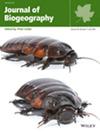Peri-Carpathian Forest-Steppe Grasslands: Distribution, Indicator Species and Extreme Species Richness
Abstract
Aim
We aim to refine the definition of peri-Carpathian forest-steppe grasslands, provide an updated distribution map, identify consensus indicator species and summarise data on their extreme species richness.
Location
East-Central Europe (Czech Republic, Austria, Slovakia, Hungary, Romania, Ukraine).
Taxon
Vascular plants.
Methods
A total of 127 vegetation plots from large vegetation databases and field sampling were classified as the Brachypodio-Molinietum association based on two criteria: (1) the existing formal definition and (2) a threshold of consensus indicator species derived from a literature review. The plots were mapped, and their basic habitat conditions were characterised. Habitat affiliations of consensus indicator species were expressed using the diagnostic species lists in the EuroVegChecklist. Maximum species richness values were extracted from the plot data and summarised.
Results
Peri-Carpathian forest-steppe grasslands of the Brachypodio-Molinietum association have been recorded across a large area of East-Central Europe, particularly in the lower to middle altitudes of the Western and Eastern Carpathians and their foothills and adjacent regions. These grasslands typically occur in moderately warm, relatively precipitation-rich regions with deep soils, primarily on plateaus and gentle slopes of up to 10°, developed predominantly over less consolidated Mesozoic and Tertiary sedimentary rocks. We identified 60 consensus indicator species, mostly species of forest-steppe habitats, with species of mesic grasslands also well represented. The current maxima of vascular plant species richness exceed 110 species per 10–16 m2. These maxima have been recorded in three regions: the Prut-Siret Interfluve in western Ukraine, the NW Transylvanian Basin in Romania and the White Carpathian Mts in the Czech Republic.
Main Conclusions
The extremely species-rich peri-Carpathian forest-steppe grasslands are confined to a geographically well-defined area of East-Central Europe. The observed fine-scale species richness of vascular plants is currently the highest known in the world. In addition to similar habitat conditions, the presence of an ancient forest-steppe species pool appears to be a prerequisite for such extreme species richness. Recent paleoecological evidence supports this hypothesis.


 求助内容:
求助内容: 应助结果提醒方式:
应助结果提醒方式:


